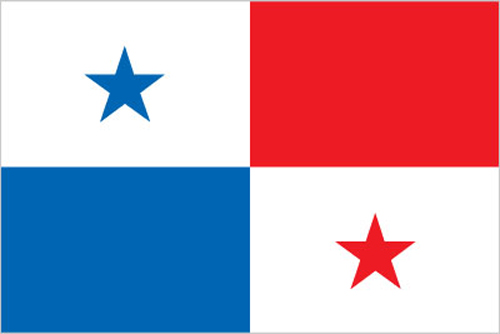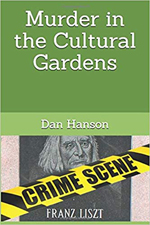|
| News and Upcoming Events for Panamanians in Cleveland | ||||
Contact us for more information.
Submit your Cleveland Panamanian news and events.
| ||||
| Out & About - Photos and Event Recaps | ||||
2024Johnny Wu pointing to the land where he was raised - Panama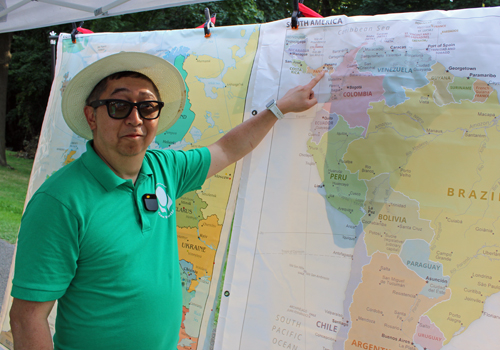 Spotting and Avoiding Scams for Hispanic and other CommunitiesThe Federal Trade Commission (FTC) is a government agency that protects people from frauds and scams. Unfortunately, scammer often target communities that they feel are vulnerable. That may be senior citizens, immigrants or members of ethnic communities. The FTC partnered with Ethnic Media Services (EMS) and hosted an event in Cleveland Ohio on September 24, 2024 dealing with Spotting and Avoiding Scams - especially for the ethnic communities. Experts from several agencies were joined by ethnic community leaders and members of ethnic media outlets for a robust and informative session.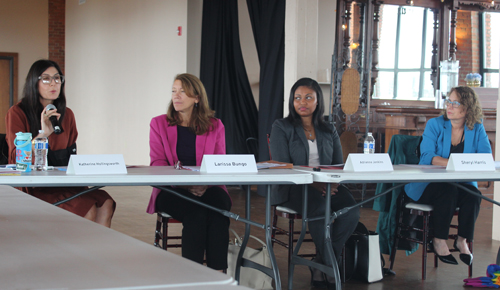 Speakers from the FTC, Legal Aid and Cuyahoga County at the Scam event Resources, photos and videos about scams and the ethnic communities Convencion Hispana 2024The Hispanic Roundtable hosted their 2024 community convention on Saturday September 21,2024. It featured a Naturalization Ceremony, workshops for immigration, financial and medical advice, student contests, health screenings, a resource fair and more. The keynote presentation was a conversation between HRT co-founder José C. Feliciano and EGOT (Emmy, Grammy, Oscar, Tony) winner Rita Moreno.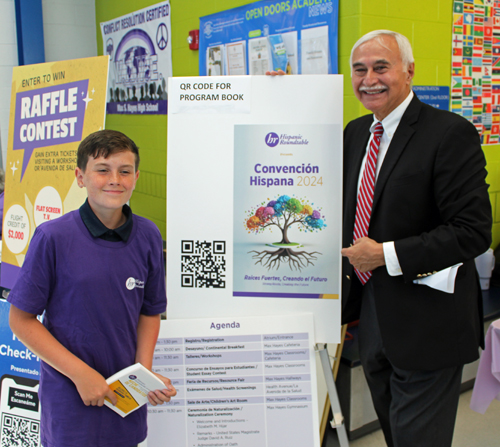 José C. Feliciano and grandson See more photos and a video from the 2024 Convencion Hispana Julia De Burgos Cultural Arts Center CelebrandoJulia De Burgos Cultural Arts Center in Cleveland Ohio was founded in 1989 as a family oriented center to serve the Latino youth and their families through programs and activities designed to foster cultural pride and art appreciation. On Saturday September 14, 2024 they celebrated their 10th annual Celebrando which is dedicated to honoring the rich cultural heritage of the Hispanic and Latino communities in Cleveland. It's a vibrant and engaging occasion filled with music, dance, and traditional cuisine, as well as educational and artistic presentations.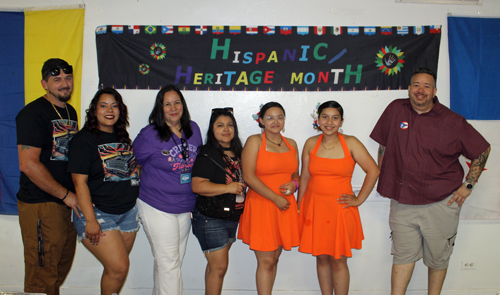 Doors to My Barrio ProjectDoors to My Barrio at Julia de Burgos features old doors as canvases for artists to paint about the land of their heritage including Argentina, Bolivia, Costa Rica, Panama, Chile, El Salvador, Mexico, Dominican Republic, Brazil, Ecuador, Nicaragua, Peru, Guatemala, Cuba, Venezuela and more. Watch a video tour. 2024 Pan-American Masters GamesCleveland was the proud host of the 2024 Pan-American Masters Games from July 12-21, 2024. A major event of the International Masters Games Association, the Games offer an opportunity to showcase competitive spirit and athletic ability of masters athletes on a global stage. Thousands of athletes from 6 continents (sorry Antarctica), 48 states and more than 70 countries, including Argentina, came to Cleveland in a celebration of health, vitality, friendship and an active lifestyle at any age.
 Back to the main Pan Am Masters Game Page 2021Fashioning Identity: Mola Textiles of PanamáFor the Guna women of Panamá, the mola, a hand-sewn cotton blouse and a key component of traditional dress, is a powerful symbol of culture and identity. A new exhibition at the Cleveland Museum of Art, Fashioning Identity: Mola Textiles of Panamá, explores the mola as both a cultural marker and the product of an artistic tradition, demonstrating the important role women artists play in the construction of social identity. The exhibition is on view in the museum's Arlene M. and Arthur S. Holden Textile Gallery now through October 3, 2021.The Guna (formerly Kuna) are an indigenous people living on the Caribbean coast of Panamá. Guna women began creating molas by the early 20th century. When the Panamanian government sought to suppress their culture, the Guna rebelled in 1925, rallying around their right to make and wear molas as a statement of their independence. Molas are crafted from masterfully hand-sewn cotton panels that are made in pairs and sewn into blouses. The panels feature a wide array of vibrantly colored, often whimsical subjects, ranging from geometric abstraction to motifs based on the natural world, Guna life and mythology, and Western popular culture. "A women's art form, molas serve as visual embodiments of the strength and survival of Guna identity," said William Griswold, director of the Cleveland Museum of Art. "At the same time, they are practical elements of daily life as clothing and expressions of personal individuality and creativity subject to changing fashion trends from one generation to the next. Fashioning Identity: Mola Textiles of Panamá examines the mola's complex role in Guna society and demonstrates the way they blend tradition and constant innovation." "Strong expressions of duality, repetition, and equilibrium are evident in mola imagery, both in single panels and those comprising the front and back of a blouse. Driven by these and other aesthetic values along with a spirited practice of artistic critique, Guna women are passionate about making ever more innovative mola designs that continue to push the boundaries of their artistic tradition," said Andrea Vazquez de Arthur, who curated the exhibition while serving as the museum's first Mary and Leigh Carter Director's Research Fellow. Fashioning Identity: Mola Textiles of Panamá presents both individual panels and complete blouses (both are known as molas) and celebrates several gifts that have entered the museum's collection over the years. The exhibition also features generous loans from Denison University, which holds one of the most important Guna collections in the United States. The molas on display span distinct periods of Guna history, from the era of the 1925 revolution to the 1980s. The exhibition is accompanied by bilingual (English/Spanish) gallery labels, as well as a bilingual booklet that is available in the gallery and on the CMA website.
| ||||
| Organizations and Resources for Panamanians in Cleveland | ||||
Submit your Cleveland Panamanian organizations and resources. | ||||
| Business, Education and Employment Information | ||||
Submit your Cleveland Panamanian jobs, classes and other opportunities. | ||||
| Cleveland Panamanian Feedback and Memories | ||||
| ||||
| Panamanian History and Culture | ||||
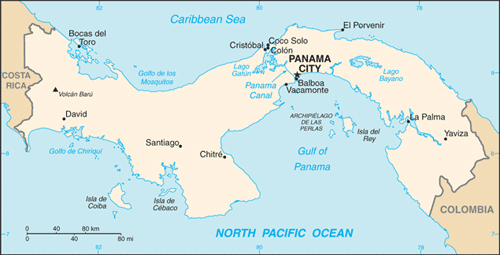 The Panama Canal was built by the US Army Corps of Engineers between 1904 and 1914. In 1977, an agreement was signed for the complete transfer of the Canal from the US to Panama by the end of the century. Certain portions of the Zone and increasing responsibility over the Canal were turned over in the subsequent decades. With US help, dictator Manuel Noriega was deposed in 1989. The entire Panama Canal, the area supporting the Canal, and remaining US military bases were transferred to Panama by the end of 1999. An ambitious expansion project to more than double the Canal's capacity - by allowing for more Canal transits and larger ships - was carried out between 2007 and 2016. 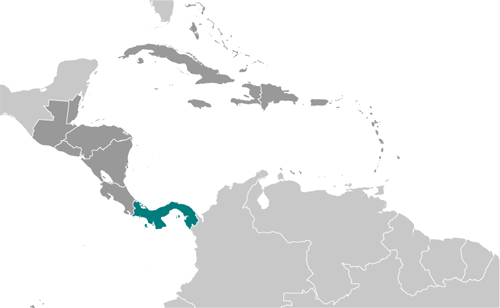 Tell us about the music, food, holidays, traditions, costumes, language and other qualities that makes people from Panama so special. Submit your Cleveland Panamanian cultural items. | ||||
| Profiles of Panamanians in Cleveland and Northeast Ohio | ||||
|
For sponsorship opportunities please contact us at info@clevelandpeople.com
Top of Page
Please support the Panamanian pages of ClevelandPeople.Com
Stay informed about the news and special events of the Group(s) you choose by signing up for the free ClevelandPeople.Com e-newsletter Follow ClevelandPeople on Twitter  or Cleveland People on Facebook Like the work of ClevelandPeople.Com? Contribute to the cause via Paypal Visit our On-line Store featuring Books, DVDs, Music, Flags, Clothes, Food and more from our various ethnic groups. Browse over 8,500 ClevelandPeople YouTube videos |
Magnum Computers Inc.
